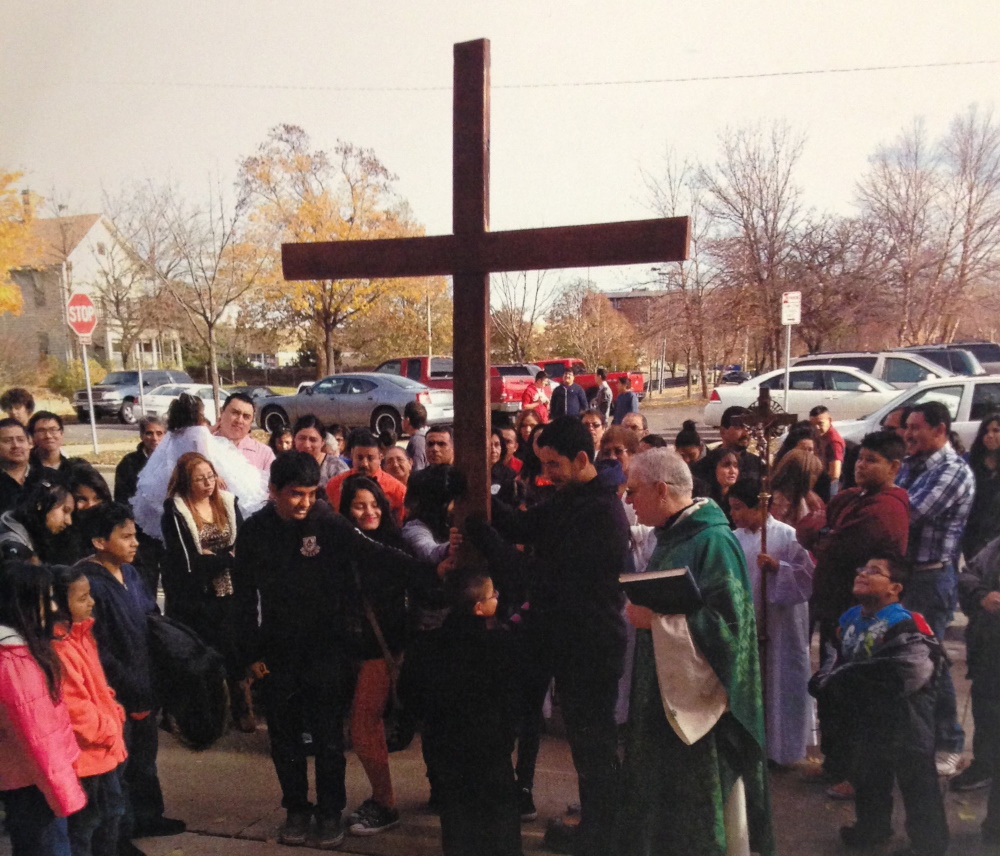
I shouldn’t do this to myself. I wanted to write a bit about the period of evangelization and precatechumenate. I know there are many misunderstandings about this part of the process. The biggest one is that there’s a “schedule” for the precatechumenate. There isn’t one. At least, there shouldn’t be. So, to find some examples of what parishes might be doing, I Googled “RCIA schedule.”
Should the RCIA process look like this?
The first result that came up was schedule that began in mid-June and ends with the Easter Vigil.
It starts with a period called “Inquiry” that consists of six every-other-week classes.
After a couple weeks off, the weekly “Precatechumenate” classes start at the beginning of September. These classes are a read-through of the U.S. Catholic Catechism for Adults, two-chapters per week for eleven weeks (no “class” on Halloween or Thanksgiving).
The Rite of Welcoming / Rite of Acceptance is scheduled for the First Sunday of Advent. This begins the “Catechumenate.” The following Tuesday evening, the weekly read-through of the catechism continues until the First Sunday Lent in mid-February.
“Purification & Enlightenment” begins with the next chapter in the catechism and continues until Easter Vigil.
That schedule covers all 36 chapters of the catechism. There is no distinction among the periods of the process other than the celebration of the rites.
I need to breathe for a moment.
The heart of the RCIA is an encounter with Jesus Christ
I am sure parishes that do this kind of thing have good intentions. But why do we so often do things like this to our seekers? What are we hoping to accomplish?
Way back in 1979, about a year after he was elected, Pope John Paul II wrote “On Catechesis in Our Time.” In that document, the pope uses the word “Christocentricity.” By using that word, he “intended to stress that at the heart of catechesis we find, in essence, a Person, the Person of Jesus of Nazareth” (5).
Everything we do as catechists has to help seekers encounter the mystery of Christ.
Everything we do as catechists has to help seekers encounter the mystery of Christ. “The definitive aim of catechesis,” said the pope, “is to put people not only in touch but in communion, in intimacy, with Jesus Christ” (5).
Now, if you are already a disciple, if you encounter the mystery of Christ every day, if you are in communion, in intimacy with the Person of Jesus of Nazareth, you are already centered on Christ. You are “Christocentric.” And for you, a chapter-by-chapter read-through of the catechism may indeed lead you to deeper intimacy with Jesus.
But if you are not yet “Christocentric,” if you don’t yet know Christ or have only just begun to know Christ, you need someone to help you get “not only in touch, but in communion, in intimacy with Jesus Christ.” And that won’t happen by reading the catechism. The Person of Jesus of Nazareth is not in a book.
“This teaching is not a body of abstract truths,” said Pope John Paul II. “It is the communication of the living mystery of God” (7).
The RCIA leads your seekers to an encounter
So how do we do that? How do we bring the seekers to an encounter with mystery? Pope Francis gives us an answer:
On the lips of the catechist the first proclamation must ring out over and over:
“Jesus Christ loves you; he gave his life to save you; and now he is living at your side every day to enlighten, strengthen and free you.” (Joy of the Gospel, 164)
When you look through the entire catechism, there are obviously some things the church teaches that are more important than other things. Pope Francis says we have to focus on the one, most important thing. Like Pope John Paul II, he is telling us our catechesis has to be “Christocentric.”
“To get diverted by many secondary or superfluous things does not help,” said Pope Francis. “What helps is to focus on the fundamental reality, which is the encounter with Christ, with his mercy and with his love, and to love our brothers and sisters as he has loved us” (October 14, 2013).
To be “Christocentric” catechists, we must lead seekers to that transformative encounter the Person of Jesus of Nazareth so that they know they are loved, saved, and freed.
To be “Christocentric” catechists, we must lead seekers to that transformative encounter the Person of Jesus of Nazareth so that they know they are loved, saved, and freed. We do that over and over, deeper and deeper. There is nothing else. We have no other job as catechists.
I’ll get to the article on precatechumenate soon. I promise to stay away from Google. But more importantly, I promise to try to be more “Christocentric” and focus on the core message:
“Jesus Christ loves you; he gave his life to save you; and now he is living at your side every day to enlighten, strengthen and free you.”
Your Turn
How are you leading your seekers to an encounter with Christ? What has helped the most with being a “Christocentric” catechist? Share your thoughts in the comments below.










All I can say is “Amen!” If the inquirers do not experience an encounter with Jesus Christ, they may as well join a secular club. The main difference that the Church offers is a transformative encounter with the living Christ. Thank you for constantly reminding us of this great truth.
Thank you! GOD BLESS
Here’s to that and a simple thanks for your vigilant, genuine and helpful work and thoughtfulness that continues to inspire a continued resource for renewal of Christian initiation at our parishes. We need this discussion and focus to continue to help accompany those searching for ‘faith today and finding Christ Jesus in the treasure of our Catholic tradition’ (Fr. Frank DeSiano, CSP).
THANK YOU! And AMEN!
In my short journey as an RCIA catechist, I’ve basically come to the conclusion that Pope Francis says must ring out of our lips over and over: “Jesus Christ loves you; he gave his life to save you; and now he is living at your side every day to enlighten, strengthen and free you”. Amen! Amen!
Also, I went to a Catholic university in the late ’70s/early ’80s (and subsequently was in the seminary for a short while), and learned the word “Christocentric”. It had a powerful impact on me, but I don’t think I’ve heard it spoken in all these many decades since. It is near and dear to my heart! Thank you for speaking it again!
I look forward to receiving your newsletters every week! Thank you!
There is another principle of catechesis and evangelization: Meet people where they are. Where many, if not most Inquirers are is a period of questions. They want to know 10+ years experience as a RCIA catechist) among other things: 1) What is Faith? Is religious practice sensible/reasonable? 2) Who Jesus is? Who is the Christ? Is the Catholic Church the intentional church of Jesus Christ?
Where people are now in contemporary American society is a desire for a loose structure so that they know that and how to reorient their life to Christ. They person needs to know when they start RCIA that their life will be overturned and given to the Lord in a variety of ways. Also, the schedule emphasizes for the completely unchurched or the unbaptized (but curoious about Jesus and the Church) the primordial importance of Easter and the fact of the Death and Resurrection of Jesus. There is nothing inherently wrong with a “schedule” ; how the the schedule is structured and presented (is there flexibility to adapt to individual circumstance?) is more important that being schedule -phobic.
The Inquiry/Evangelization/Precatechumenate phase is venerable and works for many (most) as it establishes who Christians become disciples for (Jesus Christ), through Jesus’s Church that is the depository of the fullness of the Faith.
More simply: Inquiry answers who is Christ and the Church, this is the necessary foundational step before the relationship encounter is fully engaged in the Catechumenate and Enlightenment -Purification phases. When reading the RCIA tired book this structure makes complete sense. We will continue in this very orthodox process in our parish.